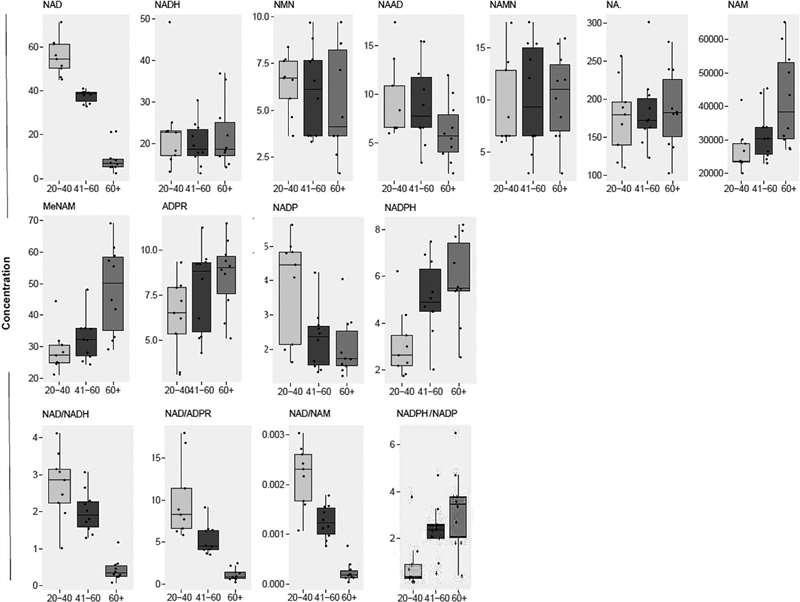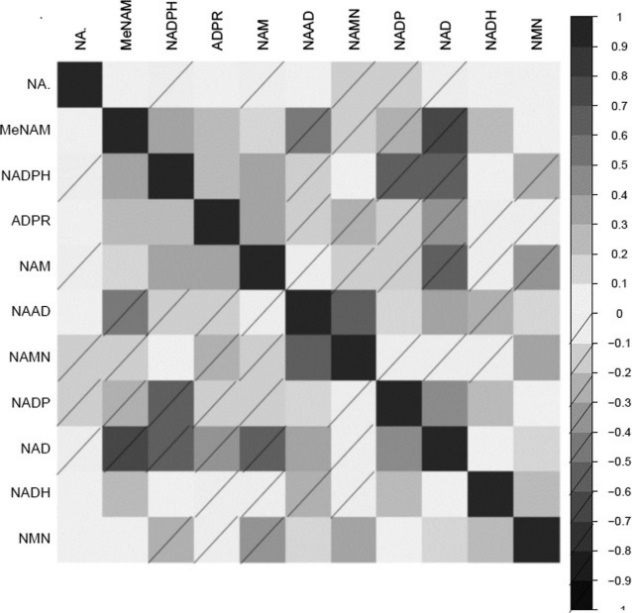Title: The Plasma NAD+ Metabolome Is Dysregulated in "Normal" Aging
Journal: Rejuvenation Research
Published: 2019
Background
Nicotinamide adenine dinucleotide (NAD+) is a vital coenzyme involved in numerous biological processes such as energy metabolism, DNA repair, and cell signaling. Its levels and associated metabolites have been linked to aging and age-related diseases, making them a key focus in aging research. Understanding the dysregulation of NAD+ and its metabolites in aging can provide insights into the mechanisms of age-related decline and potential therapeutic targets.
Materials & Methods
Sample Collection and Preparation:
Plasma samples were collected from fasting subjects to minimize variations due to food intake. The plasma was separated from cellular components by centrifugation and stored at -80°C for future analysis.
Analytical Methodology:
- Chromatographic Separation: A reverse-phase chromatography column was used to separate metabolites based on hydrophobicity and molecular size.
- Mass Spectrometry Detection: High-resolution mass spectrometry was employed to detect and quantify metabolites based on their mass-to-charge ratio (m/z).
- Quantification of NAD+ Metabolites: The LC-MS method was optimized for the simultaneous quantification of multiple NAD+ metabolites, including NAD+, NADH, NADP+, NADPH, nicotinamide (NAM), nicotinamide mononucleotide (NMN), nicotinamide riboside (NR), adenosine diphosphate ribose (ADPR), and methylated derivatives such as methyl-nicotinamide (MeNAM).
Statistical Analysis:
- Correlation Studies: Pearson correlation coefficients were calculated to evaluate the relationships between metabolite levels.
- Regression Models: Linear regression models were used to assess the impact of age, gender, and BMI on metabolite concentrations.
- Quality Control: Calibration curves with standard solutions were used for accurate quantification, and data interpretation considered known biological pathways.
Results
Age-Related Changes:
- Declines: NAD+ and NADP+ levels decreased significantly with age.
- Increases: NAM, MeNAM, ADPR, and NADPH levels showed an increase with age.
- No Significant Change: NADH, NMN, NAMN, and NA levels remained relatively stable across age groups.
NAD Ratios:
- The ratio of NAD+/NAD+ decreased significantly with age.
- Conversely, the NADPH+/NADP+ ratio increased with age.
Gender and BMI Associations:
- Gender: Higher NAAD levels were observed in men, suggesting gender-specific metabolic regulation.
- BMI: A significant correlation was found between BMI and MeNAM levels, indicating a potential link between obesity and NAD+ precursor metabolism.
Correlations and Associations:
- Positive correlations were observed between NAD+, NADH, and other NAD+ precursors, indicating interconnected metabolic pathways.
- ADPR exhibited varied associations with different metabolites, pointing to complex regulatory mechanisms within the NAD+ metabolic network.
 Boxplots of NAD+ metabolite abundances across age groups. Concentrations are in nmol/L
Boxplots of NAD+ metabolite abundances across age groups. Concentrations are in nmol/L
 Correlation matrix of NAD+ metabolites with each other ordered by hierarchical clustering to group together the correlated NAD+ metabolite. Heatmap scale represents correlation strength, with no dash and dash for positive and negative correlations respectively.
Correlation matrix of NAD+ metabolites with each other ordered by hierarchical clustering to group together the correlated NAD+ metabolite. Heatmap scale represents correlation strength, with no dash and dash for positive and negative correlations respectively.
Reference
- Clement, James, et al. "The plasma NAD+ metabolome is dysregulated in "normal" aging." Rejuvenation research 22.2 (2019): 121-130.




